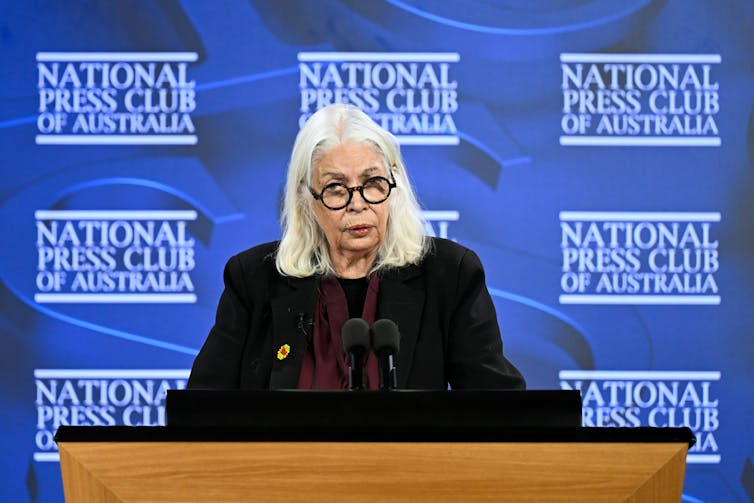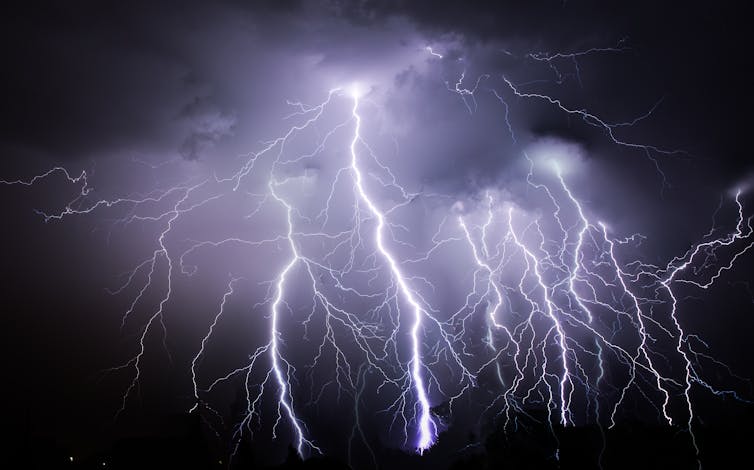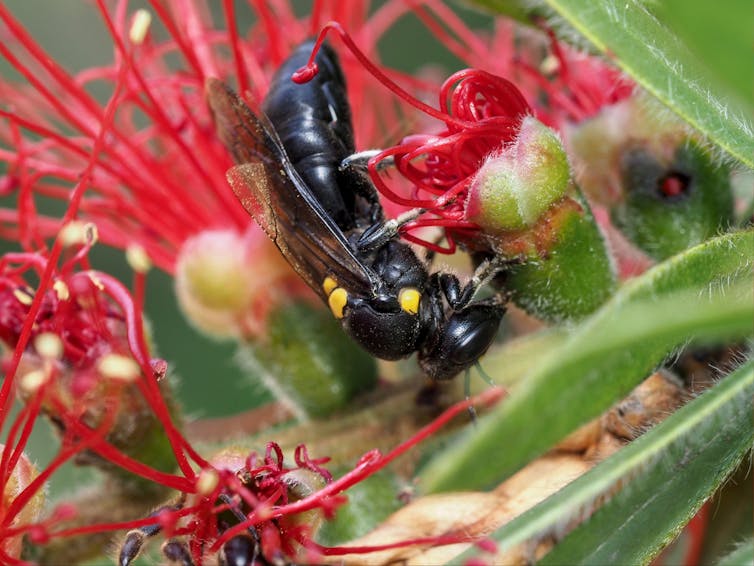This short, elegant book by Marcia Langton and Aaron Corn, may well be one of the most important ever published in Australia. Its timing could not be better, but that was not by design.
Review: Law: The Way of the Ancestors – Marcia Langton and Aaron Corn (Thames and Hudson)
The disintegration of any accord between colonised and colonising, between Indigenous Australia and the rest of us, under the barrage of resentment, lies and calculated incomprehension of the “No” campaign, is a consequence of the continuing ignorance on the part of the colonisers.
The book opens a window into the private Aboriginal world of law, justice and politics. Much remains the secret business of men and women, but we can now begin to understand the moral frameworks of human governance among our First Nations.
Beyond the killing, the disease, the marginalisation, the incarceration, the Aboriginal world is still deemed by some Australians as not worthy of respect and parity. People might have heard of the Dreaming, but for many, as Langton said at a recent event, Indigenous law means spearings – which is not law, but punishment.
The first cultural brokers, the early anthropologists and missionaries, saw magic, myths and kinship networks, rather than grasp the complexity of knowledge and law systems.
Indigenous land law became part of the common law after Mabo, as have, more recently, the traditional adoption laws of the Torres Strait Islanders. But the thrust of The Way of the Ancestors goes deeper into the law governing human relationships, authority, justice, reconciliation, and the settling of grievances (Makarrata). Corn and Langton’s book is about the purpose of law, rather than the letter.
The book is a seamless collaboration between two anthropologists, part of a Thames and Hudson series on First Knowledges predicated on the collaboration of Indigenous and non-Indigenous experts. There will be nine volumes. Already published are those on Songlines, Design, Country, Astronomy and Plants, with an edition on Innovation to be released shortly.
Law: the Way of the Ancestors draws deeply on Indigenous intellectuals such as Galarrwuy Yunupingu, Brian Gumbala and Wanta Pawu, the last two currently professorial fellows in the Indigenous Knowledge Institute at the University of Melbourne, led by Aaron Corn. Here Indigenous knowledges are being brought into our universities and cultural institutions via co-design or equal partnerships in research, building a bridge between Indigenous intellectual life and the academy.
Historian Henry Reynolds lauds this book for achieving what no other work has done: “comprehensively explain[ing] traditional law in all its manifestations”. Indeed, for the first time the outside world is permitted to glimpse the deep concepts, practices, and emotions of a way of living that sustained 2000 generations.

Lukas Coch/AAP
Building ‘moral muscle’
The colonisers came from a world riven with conflict, war, intolerance, exploitation, and contempt for the poor and ordinary. Power, wealth and authority were predicated on the power to control the bodies and minds of lesser beings: slaves, serfs, peasants, wage slaves. The colonisers’ common law, while containing provisions respecting individual rights, was largely intended to protect property and good order. The constitution they constructed for Federation, explicitly excluded First Peoples, along with Chinese and other non-Europeans, from citizenship.
Indigenous law’s purpose is not to protect the wealth, power, and property of the leadership class. It is to ensure the evenness, stability, and balance between the community and individual flourishing. The capital of Indigenous society is intellectual and moral, not material, and the law is about proper behaviour towards other people and the natural world.
Indigenous Law has evolved to ensure the wellbeing of the society by building the inner wellbeing of individuals and collective wellbeing. The Yolungu see this as the building of “moral muscle”.
Western conservatives wax lyrical on the near sacredness of the individual person – a fixation derived from thousands of years of oppression of the many by the few. Aboriginal law invests the natural world with sacredness and insists that individuals have responsibilities – to each other and to that natural world. As Langton and Corn emphasise, responsibility and reciprocity, not self-centred individual striving, build the good life, the good society, and the good world. They write:
Nature makes no concessions for human needs and wants. Both thunderstorms and saltwater crocodiles can kill you if you have not been properly taught how to live and behave around them. Showing respect for all things in nature by being observant of their workings and learning about the potential benefits and dangers they present is therefore another important way that people follow law and the proper ancestral way of doing things.

Mikael Andreas Andersson/Shutterstock
In Warlpiri language, as Wanta Pawa explains, this creates a state of “wala” –
“feelings of trust, ease, happiness, gladness, satisfaction and pride that flows when law is properly observed and all things in creation are moving and working in harmony.”
To build moral muscle, the individual must perform ceremony and progress, as far as they wish, through grades of knowledge and moral growth. Knowledge is passed from generation to generation in ceremony, practices, and art.
Learning to be a full human who can thrive, requires a prodigious intellectual endeavour of learning about “the way” of every element of nature and landscape. It also requires good deeds of kindness and care. Once completed, in Warlpiri, as a leader, you become a “people keeper”.
Transgressions and grievances are resolved by talking and by the ritualised Makarrata: complex practices of settling disputes and righting wrongs. Makarrata, as a guide to settling grievances and restoring harmony, shifts justice towards the restorative rather than the retributive, as Victoria has seen in its Koori Courts.
Reconciliation means peacemaking, restoring harmony. And law includes knowledge about the natural world, its properties, its needs and its behaviour. Law, for instance includes rules about how to behave around bees. Collecting honey requires an understanding of how bees create honey. If you don’t understand that, you might harvest too much and destroy that source of food.

Citizen scientist Dan B/Inaturalist Australia/AAP
Indigenous leadership is earned by elders who become in Langton’s words “good people to be around” because they are kind and strong and morally centred. The authors give the example of driving a car that passes a family walking along the road: the proper thing to do is to give them a lift and good people do that. Likewise, these good people can be relied upon for a bed and a feed, but more importantly, attract others with the aura of kindness and wisdom they possess. Indigenous leaders lead by good example, not by force.
Managing emotions
Central to traditional life is learning to manage emotions, feelings that can be both productive and hideously destructive. Teaching those life skills is senior women’s business, something Langton was able to disclose in this book. The NYP Women’s Council for instance, has organised their traditional work of healing, caring, teaching and the arts, into a modern co-operative.
One strategy is the use of Pitjantjatjara/English fridge magnets containing the words for around 50 emotions in both languages. Senior women had observed that young people, especially young males, could not express their emotions in either their own language or in English. If you don’t have the words for feelings, you are helpless. The Royal Australian College of Psychiatrists has recognised this work.
The Voice is a deeply Aboriginal idea with a long history, not something dreamt up last week by metropolitan academics. It is profoundly democratic in an inclusive, respectful, egalitarian way that is difficult for non-Indigenous people to grasp. It is a plea for constitutional respect that is 122 years overdue. It puts listening above telling, and embodies the respect and parity that Indigenous Australia craves.
The Way of the Ancestors reveals how much we can learn from 65,000 years of human experience, how we can heal as a nation and as a species by living with each other and the natural world, rather than by mutual exploitation.
Credit: Source link




